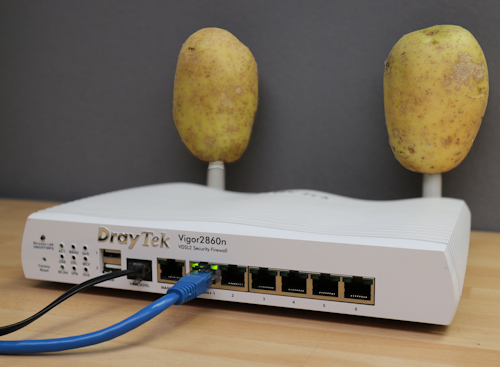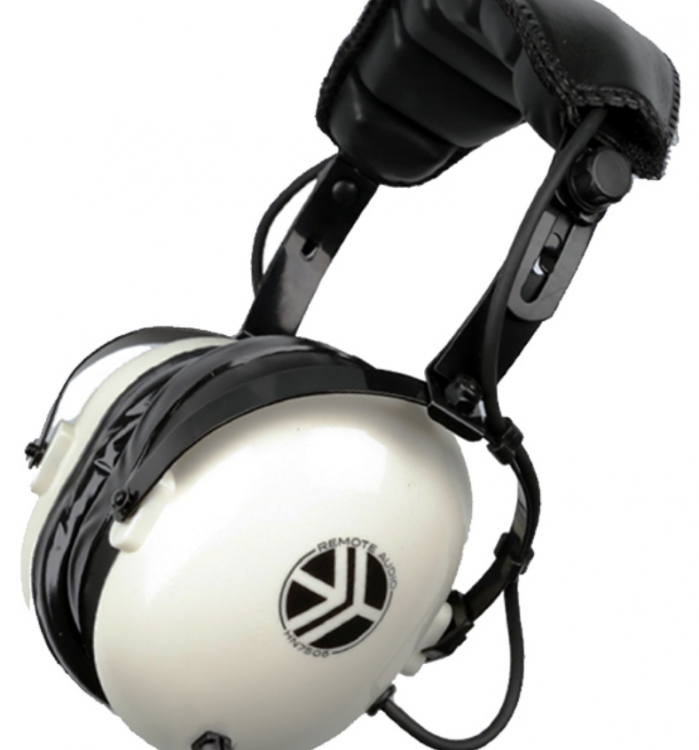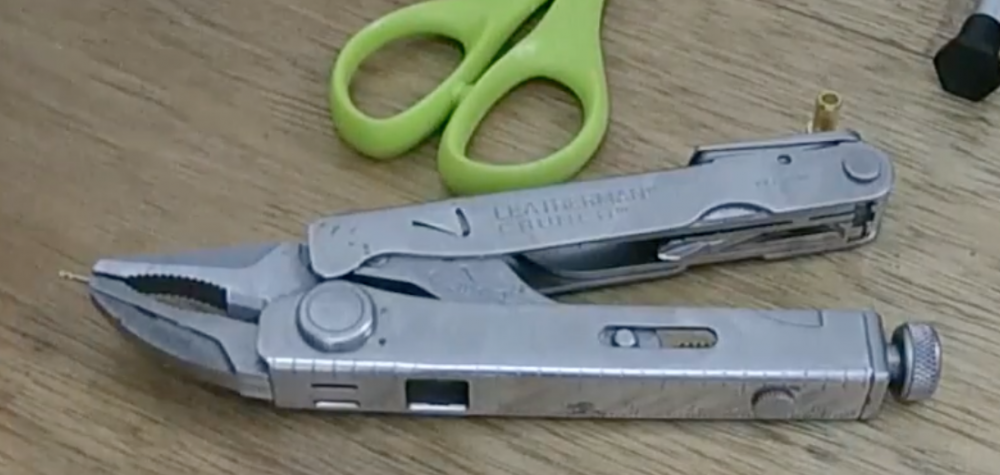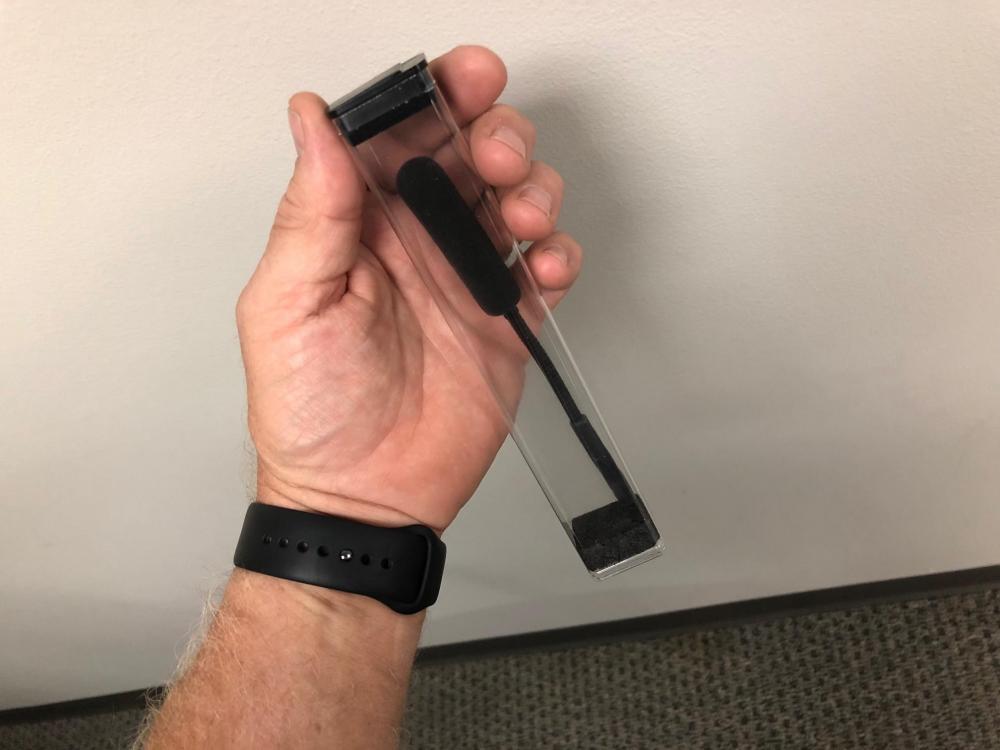-
Posts
1,474 -
Joined
-
Last visited
-
Days Won
9
Content Type
Forums
Gallery
Store
Everything posted by Glen Trew
-
Exactly, Jan. The HN7506 uses the same Foster Electric drivers used by Sony in the MDR7506, but the first attempts (about 15 years ago) were dismal. The most influential variable in those headphones is the effects of isolation, itself. Others include the distance that the drivers are from the ears, and the resonance of the cups, both of which must be different with isolation headphones. The HN7506 tries for the best balance of isolation and approximating the sound of the Sony MDR7506 so that we can go from one to the next while compromising our monitoring reference as little as possible. There are several thousand in use now, and a run of 50 is produced about every month.
-
I'm sure the movie sounded great, as did so many others recorded with the Nagra 4 series (including IV-S). But that "something special" can only be distortion, whether it's the harmonic type or tape hiss, or the effect of being over-driven into tape saturation or the hard-hitting, slow to recover nagra limiter (tape saturation being the preferred option for me), necessary with analog tape because of the need to record with only 12dB of headroom above the 0VU reference to minimize tape hiss. Instead of comparing one recording to the other, but the more telling test is to compare each recording to the mic, itself, and listen for which is the closest. Assuming that all the links in the chain are properly set with both the analog tape and nonlinear recorders, the closest to the original signal will be always the 48K, 24 bit digital recording.
-
-
I don't know the impedance of an Idaho potato, but when our car antennas were broken off in the 70s, pushing a potato onto what was left of the antenna worked really well.
-
Go for reality. A cardioid a two or three feet away (since you're in Canada, 1-meter). If you had some extra tracks and mics, put a cardioid XY pair on iso tracks.
-
Putting Sennheiser HD25 drivers in headphone cups would seem simple enough, but, without going into the many details, we've found that the result does not sound like Sennheiser HD25 phones.
-
I ordered one! Great to have foldable vice grips in my pocket.
-
I'll preface by saying that I doubt anyone's love affair with Nagra recorders is stronger than mine. I used them on countless productions, starting in the 1970s, with the Nagra III, IV, 4.2, IV-S, D, Ares C, V, VI, and 7. I've serviced hundreds of them, mechanically and electronically, and know the process backwards and forwards. But... We (Trew Audio) no longer services Nagra analog recorders at our Nashville location. Forrest Forbes, at our Burbank location will service the 4 series - and he knows them well - but if they are not already in pretty good condition, it will likely not be economically feasible. So, with that said, I'll add, with sadness, that there is no longer any practical benefit to recording on an analog Nagra, with the possible exceptions being gun shots and door slams (with the limiter off). Compared to today's 24-bit digital recorders, the analog Nagra specs of noise, distortion, and wow and flutter are way outside the modern acceptable range for professional use. They are a great piece of history, and fun to operate, and look great in the bookcase, but don't expect to use them for any hi-quality benefit.
-
The Cinema Audio Society (CAS) is partnering contributing three panel discussions/workshops to the MIX Magazine "Sound for Film" event at Sony Studio in Culver City this October 13 (www.mixsoundforfilm.com). One of the panels will be about the Ambiosonic / Soundfield recording processes. It will be a great way to learn a lot about what I believe will become a common practice.
-
Jeff Wexler, this forum needs a "like" button!
-
Probably a bit more comfortable for all heads.
-
Hi Phil, For the last couple of years, the HN7506 phones have been available with the 1/8"-1/4" combo "unimate" plug. There are a variety of cable options, including quick release and built-in slate mic, but the least expensive cable option now uses the OEM Sony cable and connector. Also, the headband, cup, and cushion assembly has change slightly, with a subtle difference having less pressure and more comfort. This latest version has the round logo like in the pic:
-
-
Hi Eric. The short answer is yes, if you need the MicroDot version. Another batch of the TA5 version will be produced soon. The back story: We stopped making the UniFlex 4080 mini gooseneck mic because the micromesh interference tubes were not on DPA's list of available parts, making it impossible for us to repair/replace. This part usually broke during the first usage, before the crew learned to not bend the gooseneck by pressing on the tip of the mic. Once that is understood, they tend to last without a problem. The availability of the micromesh interference tubes has now been resolved, so we will be able to replace these broken or missing parts if/when needed and will start making the UniFlex 4080 cardioid again. The good news is that we've gotten a lot of good responses from crews using the UniFlex plant mic. The cardioid pattern is ideal as a close plant mic, particularly in cars, but also other applications. The other good news is that the assembly has been improved. It is lower profile than before, and the powder coating (difficult to do on a flexible gooseneck) is more durable. GT
-
That looks like a good solution!
-
Here's maybe a good option. The cases we make for the UniFlex 4080 are also great for the DPA 4098. They are not only sturdy, but clear so you can see if the mic is inside, and have enough room for the MicroDot adapter, too. The pics below show a 4098 inside.
-
Like Sennheiser said, their may be nothing wrong with your mic, and the T-powered MKH416T should not be any noisier than the 48Vph version. However, it depends entirely on how noisy the 12V power source is. Unlike phantom power, the T power method puts the powering voltage directly on the microphone output, so any noise on the DC voltage is amplified by the mic preamp. This is the main reason mixer manufacturers stopped including the T-power feature on their preamps, because the internal switching power supplies used in almost all modern devices cannot be made quiet enough to be acceptable for T-power. It's been decades since there's been any benefit to having a T-powered mic, so I suggest getting Pete Varrando to convert it for you.
-
Hi David, Proper TT phone plug patch panels (TT is the smaller than the original 1/4-inch plugs, standing for "Tiny Telephone") may cause a short of the phantom supply voltage, but this is of no concern because the phantom voltage always has two 6.8k in-line current limiting resistors that keep the maximum current of a 48V supply at or below 10mA. I have actual TT patch panels in carts I made in the late 80s, early 90s, and I've been hot patching 48V phantom with them for 30 years now with no problem. Of the 3000 recording studios in Nashville, the more sophisticated ones have TT patch panels that route 48V phantom to microphones. This brings up a topic that deserves it's own thread about patch panels. Referring to XLR connector panels as "patch panels" is incorrect, as they are merely extension panels. "Patch Panel" refers to the ability to route through, interupt, not interupt, or connect. XLR panels can only connect, so, convenient as they are, they are not patch panels. That said, there are numerous advantages of patch panels, which will hopefully be realized again someday.
-
Rycote Announcement: May 2018 It is with great sadness that we announce the passing of John Gozzard, who died at his home on 4th May 2018. John founded Rycote and, whilst his name might not be familiar to many, the company he started (named after his house, “Rylands Cottage”) is recognised the world over by everyone associated with location sound. John was passionate about sound and was a film recordist in the early 1970s, working for ATV and the BBC. At that time, newly emerging practical microphones, that were exactly what sound recordists wanted, were hampered by the heavy, cumbersome microphone suspensions and windshields available, which were typically made of metal, wire mesh and rug wool. John quickly recognised the need for something much lighter and more durable, and had the vision, determination and dedication to set about making this a reality. Using the down-to-earth ingenuity of the classic British craft-worker, he invented the plastics-based “zeppelin” windshield that is so widely recognised today. Ever practical and endlessly innovative, the early days saw John using mundane items, such as garden netting and fabric from the local haberdashery, to bring lightweight form to his new designs. John continued to apply his ingenuity with the later development of the faux fur “Windjammer”, and the almost indestructible “Softie” windshield. John was a true pioneer and, from such humble beginnings, a brand-new industry was born. John retired from Rycote in 1995, but the company, the evolved product, and the generic name for location-sound windshields remain as his legacy to the industry. John will be sadly missed and affectionately remembered by all of us at Rycote who knew him, and we will continue to hold dear his pioneering and practical approach, in the company that he founded.
-
In 1975 in Nashville at the Opryland music theme park on a show called "Showboat '75", I added to my array of three Shure SR101 consoles a pot labeled "translucence". The music director was amazed at the subtle artistic difference it made.
-
I imagine that feature is to save on power consumption, the thought being that if the track is disabled, there is no need to have the 48V DC-DC converter on. Regarding the safety of plugging and unplugging a mic with phantom power turned on, there is no need for concern.
-
I can't say that I've ever tried it, but usually the input settings are not at all related to track settings. The only way to find out for sure is with a phantom powered microphone or a volt meter.
-
Thanks for your help, Jeff, but the original image was just a still shot from the interview. The full written interview article with multiple video clips from the interview is now in the link in the original post.
-
Thanks, Jeff.
-
Here's an interview with Sound Devices and Audio Limited about their merger and the new digital A-10 wireless system: https://soundandpicture.com/2018/04/sound-devices-and-audio-limited-discuss-their-merger-and-the-a10-digital-wireless-system-launch/ (this post edited Apr. 26, 2018 with proper link to the article)







